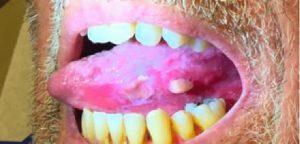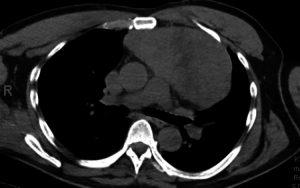Oral Lichen Planus (OLP) is a chronic inflammatory disorder characterized by white, lacy patches or painful erosions on the mucous membranes inside the mouth. It is primarily managed with topical treatments, but some cases are resistant to standard therapy. In rare instances, OLP may signal underlying systemic issues, as in a recently reported case where OLP preceded a diagnosis of Good Syndrome (GS). GS is a rare adult-onset immunodeficiency linked to thymoma (a tumour of the thymus gland), low immunoglobulin levels, and a significant reduction in B cells. The condition’s mechanism remains poorly understood but is thought to involve dysfunctional B and T cell maturation.
In this case, a middle-aged man with OLP sought treatment for recurrent respiratory infections, which led to the discovery of a large thymoma. The thymus removal (thymectomy) revealed severely reduced levels of immunoglobulins, confirming a GS diagnosis. The patient exhibited features of common variable immunodeficiency (CVID), often found in GS cases, and was subsequently treated with j (IVIG) and cyclosporine for additional immune support. Despite this, his OLP remained difficult to manage, necessitating topical treatments like clobetasol and tacrolimus, and fluconazole for recurrent oral candidiasis. His care involved ongoing monitoring, given the elevated risk of developing oral squamous cell carcinoma (OSCC) due to immunosuppression and chronic OLP.

Figure 2. OLP of the left lateral tongue at the time of care establishment with dermatology nine years after GS diagnosis GS: good syndrome; OLP: oral lichen planus
This case underscores the necessity for clinicians to maintain a high degree of awareness when managing OLP in patients who exhibit unusual symptoms or respond poorly to therapy. The connection between OLP and GS, though rare, highlights the need for a comprehensive diagnostic approach. In cases of erosive or refractory OLP, a chest radiograph and immunoglobulin level tests could aid in earlier detection of GS, potentially averting further complications.
Managing OLP in GS patients presents unique challenges due to immunodeficiency-related infection risks and heightened OSCC risk. Regular screenings, vigilant management of infections, and close follow-up are essential. This case adds to the limited but growing knowledge of GS and its overlap with autoimmune conditions, reminding clinicians of the complex interactions within the immune system.
Journal article: Fastner, S.L. and Clarke, J.T. (2024). A Case of Oral Lichen Planus Preceding the Diagnosis of Good Syndrome. Cureus.
Summary by Faith Oluwamakinde











